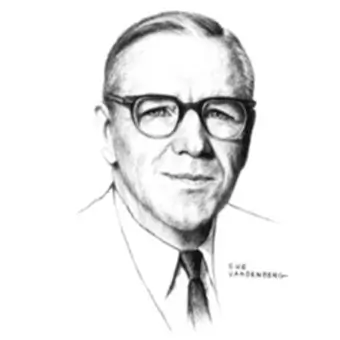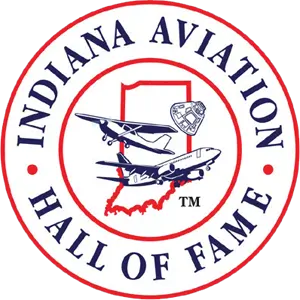
Collett Everman "C. E." Woolman
Collett Everman “C.E.” Woolman was born in Bloomington, Indiana on October 8, 1889. He entered the University of Illinois where his father was a professor of physics. In the summer of 1909, while vacating in Reims, France, Woolman found his true love: flying. He soon learned to fly in an OX5 Jenny, though his dreams of flying would be postponed until after college.
Woolman graduated in 1912 from the University of Illinois with a Bachelor of Science degree in Agricultural Engineering. He found a job in northern Mississippi managing a 7,000 acre cotton farm. Witnessing the effect that the boll weevil had on the cotton-based economy of the South, Woolman teamed up with Dr. Bert Coad to fight the insidious insect with calcium arsenate. Borrowing two Jenny aircraft from the Army, the two men began conducting experiments dusting crops by air. The success of aerial dusting so amazed a witness to the experiments, George Post, that he convinced the Huff Daland Manufacturing Company to form a separate Dusting Division in Macon, Georgia in 1924 and the first aerial crop dusting company, Huff Daland Dusters, came into being.
Woolman became Vice President and Field Manager of the dusting company in 1924. By 1925, Mr. Woolman boasted that they had the “largest unsubsidized air fleet in the world those days” with just 18 planes. Since crop dusting was only a seasonal job, Woolman moved south of the Equator during the Winter months to capitalize on the seasons in South America.
When Woolman discovered that Huff Daland was planning to sell the dusting company in 1928, he collected a group of Monroe businessmen to buy the company. Renamed the Delta Air Service for the region it served, the company, soon to be renamed the Delta Air Corporation, would be transporting passengers within a year. Woolman became General Manager of Delta and promoted efforts to secure an airmail contract with the U.S. government to grow the company.
In June 1934, Woolman and Delta earned the air mail contract transporting mail from Charleston, SC to Fort Worth, TX. As Woolman anticipated, the air mail contract brought with it stability and Delta continued to expand both airmail and passenger service. Beginning with a Stinson-A, Delta offered night service in 1935. A year later, Delta introduced the Lockheed Electra-10, the first Delta plane with two pilots, into service.
By 1940, the airline had introduced the DC-2 and the legendary DC-3 into passenger service, adding flight attendants. In January 1941, Delta acquired a new route from Atlanta to Cincinnati and obtained a foothold in the highly populated Midwest region. Soon after, Woolman persuaded the Board of Directors to move Delta’s national headquarters to Atlanta, foreseeing that the location, population, and financial resources of that city were all pointing to a prosperous future.
During World War II, Delta, under Woolman’s leadership, contributed to the war effort by establishing a separate area at the Atlanta airport to modify warplanes. The company modified over 1,000 aircraft, overhauled engines and instruments and trained Army pilots and mechanics.
After World War II ended, Woolman became President and General Manager of Delta and continued to invest in its future. In 1947, Delta received the National Safety Award for transporting a half-billion passengers miles without a fatality. In 1960, Delta was the first to use jet aircraft in passenger service. Delta Airlines received the National Safety Award a second time for flying 11 billion passenger miles without a fatality. Under the leadership of C.E. Woolman, a small enterprise that started as an idea to kill boll weevils became a successful passenger airline with an impeccable safety record.
C.E. Woolman possessed an empathy for passengers, contending they were the most valuable asset to his company. He would often say, “Let’s put ourselves on the other side of the counter. We have a responsibility over and above the price of a ticket.”
Woolman was also a ‘ hands on’ leader. He was renowned for leaving the his office several times a month to ride in his planes. Occupying his preferred seat, second row on the right side, Woolman would roam the plane, speaking with passengers to assess how the airline was performing.
C.E. Woolman died in 1966. His legacy lives on in Delta Airlines and the airline industry as a whole.
For his extraordinary achievements in aviation, the nation and the world, C.E. Woolman is inducted into the Indiana Aviation Hall of Fame the 8th day of July, 2020.
